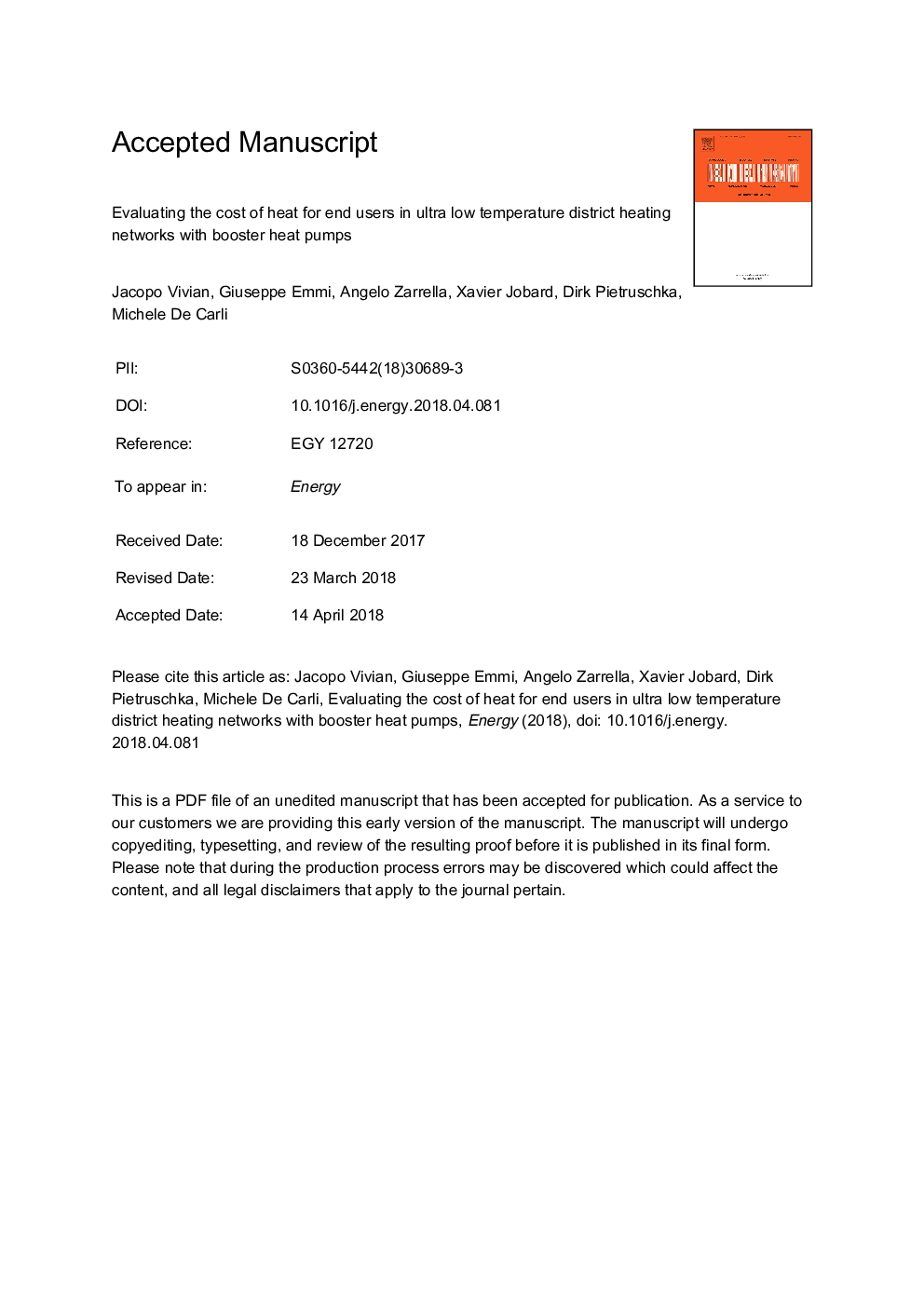| Article ID | Journal | Published Year | Pages | File Type |
|---|---|---|---|---|
| 8071605 | Energy | 2018 | 51 Pages |
Abstract
A promising district heating concept consists of distributing the heat at temperatures below 45â¯Â°C and using booster heat pumps at the customers' substations to provide the appropriate temperature needed for space heating and domestic hot water production. As such, thermal networks would be able to abate heat losses and substantially increase the number of recoverable heat sources. At the same time, the supply temperature from the booster heat pumps can be tailored to the building supplied instead of being based on the most critical consumer. This work investigates the performance of booster heat pumps assuming network supply temperatures in the range between 15â¯Â°C and 45â¯Â°C. The impact of supply and return temperature on the levelized cost of heat for different end users was assessed. The parametric study shows the importance of the nominal network temperature difference in the design phase of the system in order to reach a good trade-off between initial investment and operating costs. The economic analysis shows that the system is already competitive with individual gas boilers provided that a local low-temperature heat source can be recovered with minor marginal costs.
Keywords
Related Topics
Physical Sciences and Engineering
Energy
Energy (General)
Authors
Jacopo Vivian, Giuseppe Emmi, Angelo Zarrella, Xavier Jobard, Dirk Pietruschka, Michele De Carli,
